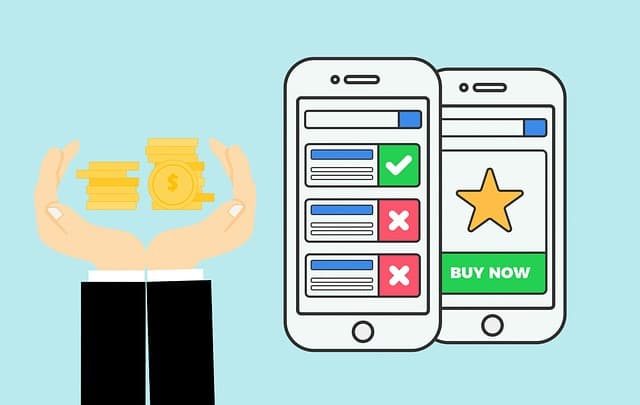-
Jun 26 2019 How To Do A Good SM Audit
With social media tools and strategies evolving day-by-day, what might have been working for your brand a few months ago could prove utterly useless today. To complicate matters further, chances are your competitors – who have bigger budgets – are probably ahead of the game, which brings us to our main point: you must audit your company’s social media regularly. A social media audit will not only help you monitor what your competition is doing right, it’ll also help you evaluate what you need to initiate, eliminate and optimize. So, let’s walk you through six steps to conduct a quick social media audit –
1. Create A Spreadsheet

Open up a new spreadsheet in Google Docs that is accessible to only key members of your team. Create a tab for each month, and add the following sections in each one of them –
a) social media handle name
b) social media handle URL
c) login info
d) names of people with access to login info
e) number of followers
f) number of comments
g) number of likes
h) number of shares
i) number of DMs
j) number of posts
k) metrics (i.e. Web traffic)
l) top 5 performing posts
m) insights / analytics
n) ad campaigns
o) other notes
p) competitorsOnce you’re done creating these sections, begin filling them out.
2. Check Your Basics

At the same time you’re working on step #1, also double check if all of your social media handles are even up-to-date with the latest information, which could range from bios and URLs to contact information and logos. Most importantly, please do not hesitate to delete any unnecessary accounts. It is better to focus on a handful of relevant platforms than spread yourself thin across any and every space.
3. Review The Data

Once you’ve filled out your spreadsheet’s sections for a few months, you will easily be able to identify the following –
a) are new customers coming in?
b) is Web traffic linked to social media activity?
c) are new followers joining?
d) are old followers leaving?
e) are followers from your target group?
f) are particular posts doing better than others?
g) are ad campaigns offering any impact?
h) are people interacting with your brand?
i) are posts going out consistently?
j) are particular days/timings better for posting?
4. Monitor Your Competition

Monitor the social media handles of at least 2-3 competitors and note down which posts are performing best for them – you might find some interesting information that you can incorporate into your own campaigns, such as content ideas or better hashtags.
5. Revise Your Strategy

Based upon the analysis you draw through answering the above questions from points #3 and #4, spend a few minutes to jot down the following –
* List down immediate goals + metrics to measure success
* List down long-term goals + metrics to measure success
* Build a new editorial calendar that has a specified frequency of posts and a good mix of content buckets that are relevant.
* List down action steps to obtain the necessary images, videos, copy and information to put together content as per your new editorial calendar6. Monitor Progress

Keep monitoring progress with social media strategy modifications every month to pull the plug on low performing campaigns and allocate more time, energy and funds to campaigns that are drawing real results. Remember, social media auditing is not a one time project – this needs to happen on an ongoing basis.
We hope these six steps help you audit your company’s social media thoroughly so you can improve your strategy to meet your end-goals. If you need help with putting together a tailored social media campaign, contact us here.
Sources –
> https://neilpatel.com/blog/social-media-audit/
> www.searchenginejournal.com/social-media-audit/264849/
> www.bigcommerce.com/ecommerce-answers/what-is-a-social-media-audit-how-to-do-it/ -
Jun 21 2019 7 Content Essentials For Your Brand’s Social Media
If you’re unsure about what type of content to share on your brand’s social media handles to draw the maximum engagement, worry not! We’ve put together a handy cheat sheet of seven social media content essentials to revamp your strategy.
1. User Generated Content (UGC)

UGC is a no-brainer for boosting engagement and reach these days. In exchange for offering credits, not only do you get free, high quality content to post, you also enjoy a meaningful interaction with your following and smartly tap into their network, too. Instagram is an excellent platform, in particular, for UGC content. You can run a small giveaway to incentivize people to participate.
2. Visual Content

Visual content does much better than only text-based posts. According to studies, posting images on Twitter increases retweets by a whopping 150%. No wonder Examiner reports that nearly 85% of marketers use visuals when creating social media content.
3. Infographics

Infographics are a visually appealing, informative piece that gets a lot of engagement. In fact, they can generate a lot of shares, too. According to information by Okdork + Buzzsumo, infographics actually receive the most social media shares, followed by listicles. Add value to your customers’ lives with such content pieces throughout the month. For example, if you’re a jewellery brand, an infographic about the different types of earring categories / names is handy for shoppers. Or, if you’re a travel company, an infographic about the most affordable countries based on currency exchange values is helpful for customers.
4. e-Books / Digital Magazines

Consider curating content throughout the year that you can repurpose into a helpful e-Book or digital magazine. You can promote this on social media through a small paid promotional campaign and offer free downloads in exchange for information collection (i.e. email IDs / referrals). Also, if you plan this smartly, you can feature quotes / interviews from other influencers so they also share the download link with their network!
5. Testimonials

Sharing the positive feedback previous customers/clients have said about you, as well as media mentions, is a wonderful way to help potential customers choose your brand over competitors. It establishes trust and credibility. Instead of text based testimonials, consider short video snippets.
6. Interactive Content

Polls, quizzes, contests, Q&As and surveys are all interactive content pieces that are fun. Let’s face it – even the New York Time’s most popular content piece was a quiz, not an article. If planned properly, you can collect useful consumer insights through this, which can later be repurposed into a PR piece featuring NEW industry-related data.
7. Livestream Sessions<

Facebook live streams have definitely picked up of late. It unites your followers in real-time, which is a powerful feeling. And, you can share the content afterwards so those who missed out can watch. Jay Shetty is an excellent example of someone who uses FB live sessions brilliantly to build his brand, generate leads and foster a sense of community amongst his followers. Instagram also has a “live” option, but it disappears once you’re done.
Now that you know which content buckets perform the best on social media, go ahead and start upgrading your SM strategy. Need help with putting together a robust social media plan? Contact us right here.
Sources –
> www.postplanner.com/blog/types-of-social-media-content
> https://coschedule.com/blog/social-media-content/
> www.socialmediatoday.com/news/5-types-of-social-media-content-that-convert/539584/
> www.convinceandconvert.com/content-marketing/9-best-from-buffer/
> https://nealschaffer.com/create-social-media-content/ -
Jun 19 2019 How AI Is Impacting Digital Marketing
According to a survey by MeMSQL, 61% of marketing professionals said machine learning and artificial intelligence (AI) will be the most important data initiatives. Likewise, in a 2018 survey by Salesforce, 51% marketers indicated they were already using AI, and 27% more are planning on incorporating it this year. So, why exactly is AI the hottest thing in the world of digital marketing right now? Here are six ways in which AI is impacting the digital marketing space, beyond reducing the elements of human error and bias –
1. AI Improves & Personalizes User Experience

AI can help improve user experience at multiple levels. Not only does it provide you insight regarding how customers interact with your Website (and, where the roadblocks in design, navigation and content are), it also takes personalization to a whole other level. In fact, a 2017 survey by Evergage indicates 33% marketers have been using AI to provide personalized Web experiences and that 63% saw increased conversion rates and better consumer experience. AI tools, like Grid, empower you to offer different users different Website experiences based on information they provide – images, text, offers and call-to-actions can all be relevant as per who has logged on.
2. AI Improves Sales & Security

AI not only predicts buyer behavior and personas, it can also help with security issues to make online transactions safer for consumers. Most importantly, AI helps forecast future market trends, that could impact your sales – it enables you to plan and tweak your sales cycle more effectively.
3. AI Improves Ads

AI can predict user behavior accurately based on user data it collects and analyzes. Hence, it helps you create ads in-line with your audience’s needs and preferences.
4. AI Improves Content

Forbes. The Associated Press. The New York Times. The Washington Post. BBC. Reuters. Top news agencies are using AI technology to create news that draws more hits. Tools like Quill, Wordsmith and Articoolo all get the job done really well.
5. AI Improves Content Marketing

Based on audience information on-file, AI helps you offer audiences better recommendations for content – Amazon and Netflix are pros at this! Many brands even use AI to personalize drip email campaigns that push content, products and services on the right day, at the right time and appropriate frequency, with subject lines that are actually relevant. Since research indicates consumers are 43% more likely to purchase products from companies that hyper-personalized their content marketing, this is a huge value-add from AI.
6. AI Improves Customer Service

Chatbots have made it easier to transform the customer service process – they can answer questions 24/7, retain data, always maintain a friendly tone, respond to multiple customers at the same time and do away with any wait-time. Brands like Sephora have been using chatbots for a while, and many official Facebook pages also use a modified version of this tool.
Are you blown away by the number of ways in which AI is transforming digital marketing? It’ll be interesting to see how AI continues to refine marketing processes as more tools become available in the market in the years to come. Contact us here for more information.
Sources –
> https://inc42.com/resources/role-of-ai-in-digital-marketing/
> https://blog.adext.com/applications-artificial-intelligence-ai-digital-marketing/
> https://marketinginsidergroup.com/artificial-intelligence/5-benefits-of-ai-for-digital-marketers/ -
Jun 17 2019 Is Your Brand Making These Social Media Mistakes?
Yes, making mistakes is a part of human nature. However, making mistakes on your company’s social media channels is unacceptable because it can either have tremendous negative impact on your brand’s image and result in poor ROI. Here are 8 social media blunders to steer clear of –
1. Underestimating Social Media’s Potential

If you think social media is only a marketing tool, think again. It can also impact sales by connecting you to prospective customers and finding opportunities to educate them about your products/services. Social media can even act as a customer service tool – you can address customer inquires and negative feedback in real-time. And, social media can offer HR support – your job postings will reach a wider network, giving you a larger pool of potential recruits to choose from.
2. Failing To Plan Properly

Invest time to conduct a social media audit, monitor competitors’ SM handles, build a proper editorial calendar and develop list of hashtags. A bit of planning ensures you can be consistent with your postings, ad campaigns, contests and more. Remember – no strategy means no results.
3. Lacking A Balanced Approach

Just like delayed interaction (or, no interaction at all) is contrary to the purpose of being on social media (engaging your customers in a dialogue), overdoing things can backfire, as well – it looks spammy. Posting 10 times a day, using too many hashtags, over-tagging people, etc. is an unsophisticated approach. Strike a healthy balance so you’re neither MIA nor too spammy.
4. Duplicating Content Lazily

Don’t get onto every single social media platform for the heck of it. Pick 2-3 platforms at the most, which are truly relevant for your business, rather than spreading yourself too thin. Most importantly, focus on curating different content for each handle. Why should someone follow you in 3-4 different places to see an identical update everywhere?
5. Ignoring The Basics

Run spell check and grammar check. Fill out all sections of your profile. Obtain high-quality graphics. These are basic things many companies forget to look into. It makes a potential customer think you’re too lazy to invest in your own brand.
6. Avoiding Social Media Ads

Ads help you reach a wider audience base. If you aren’t going to push your content out with consistent social media ads, what’s the point of even investing in high-quality content?
7. Forgetting To Check Analytics

Instagram shows insights as to which days and timings draw you the best results – post according to this specific information, rather than being arbitrary with timings. Furthermore, pay attention to your Website’s traffic sources – are they from a particular social media handle, ad campaign or promotion/contest? Keep tabs on what is and isn’t working using the right metrics. Simply looking at increasing/decreasing followers isn’t an accurate yardstick.
8. Lacking Tact

Newsjacking – trying to jump onto any news event / trending topic – shows lack of empathy. For example, if a natural disaster happened, don’t tell customers, “well, you can still shop online!” Similarly, deleting bad comments/reviews can piss a customer off further. Skilfully take difficult conversations into your Inbox/DM, rather than washing your dirty laundry in public.
We hope these eight tips help you reevaluate your social media habits! If you need help with building the perfect social media plan for your brand, contact us at kissdoodles.
Sources –
> www.allbusiness.com/bad-social-media-habits-your-business-must-avoid-2627-1.html
> www.copyblogger.com/social-media-balance/
> https://tweakyourbiz.com/business/social-media/business-habits
> www.socialmediatoday.com/news/5-bad-habits-marketers-should-drop-in-2019/543892/




